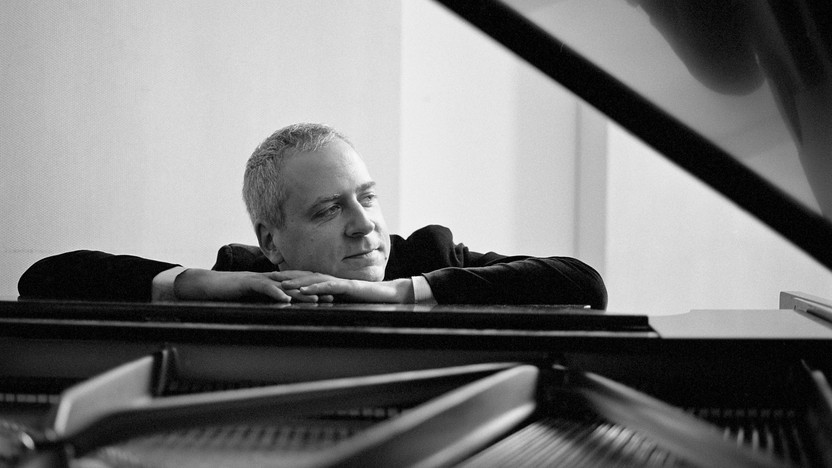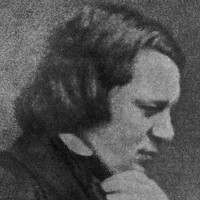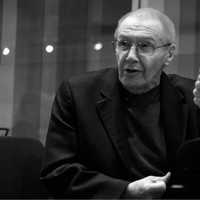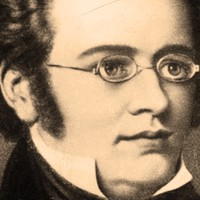Jeremy Denk Plays Mozart’s Piano Concerto No. 23


 Listen to Audio
Listen to Audio
“Schumann may not be so much a composer of pieces as he is of visions–visions breaking through obscurity–and the heartbreaking vision in the fourth movement of the Märchenbilder is of a lullaby. Schumann does not simply express something through the medium of a genre; he’s not content just to fill the vessel; he does not write “a lullaby”; he writes into the lullaby. He writes music–how do I put this?–about the cluster of emotions surrounding a lullaby.” —from Jeremy Denk’s blog, Think Denk
In 1850, the Schumann family moved from Dresden to Düsseldorf, where Robert began his new post as municipal music director. Not long after the move, Clara noted her husband’s “highly nervous, irritable, excited mood,” the first sign of his final decline toward insanity. He still experienced intervals of intense creative focus, as in the first months of 1851, when he produced orchestral overtures, song settings, choral compositions, and one of the treasures of his chamber music repertoire, Märchenbilder (Pictures from Fairyland) for viola (or violin) and piano. He dedicated the score to the accomplished violinist Wilhelm Joseph von Wasielewski, then the concertmaster of his Düsseldorf orchestra, but the real intention of these colorful miniatures was that they would be accessible to the broader market for published music, especially amateurs who played chamber music at home.
Schumann did not specify publicly which fairy tales he had in mind, but he was making a nod to the tradition of German storytelling, like the tales collected earlier in the century by the Brothers Grimm. The longest and richest of the Fairy Tale Pictures is the last, marked “Langsam, mit melancholischem Ausdruck” (“Slowly, with melancholy expression”). The viola and piano harmonize for long, lovely melodies in the outer sections, while a central passage uses a recurring, slurred motive in the viola as a supple accompanying texture.
Aaron Grad ©2016
 Listen to Audio
Listen to Audio
Wolfgang Amadeus Mozart delighted his fans in Vienna by introducing a dozen new piano concertos between 1784 and 1786, and he might have kept up that pace if a war with the Ottoman Empire hadn’t scattered the aristocrats who subscribed to those concerts. He entered the Piano Concerto No. 23 in A Major into his catalog of completed compositions on March 2, 1786, and he probably debuted it on one of the three programs he presented that spring.
Preliminary sketches, which may date from as early as 1784, included a pair of oboes in the instrumentation, but the final version substituted clarinets instead. The concerto’s first movement gives the woodwinds far more attention than they would have been accustomed to at that time, starting with unaccompanied phrases in the orchestra’s introductory tutti and continuing in the conversational development section.
Later editions notched the tempo of the middle movement up to Andante, but Mozart’s manuscript for this heavy-hearted movement clearly calls for the slower and more affecting Adagio tempo. Again the woodwinds play an outsized role in accompanying and answering the piano, and they also introduce the only wholly cheerful passage in the movement, in the contrasting major key. Minor-key episodes within the rondo finale rehash some of the angst of the slow movement, but the main recurring theme always reaffirms the jovial home key with its definitive leaps.
Aaron Grad ©2024

Born in Romania to Hungarian parents, György Kurtág moved in 1946 to Budapest, where he followed a musical path blazed earlier in the century by Béla Bartók. It was not until 1957, during a year of study in Paris, that Kurtág encountered the modern styles that had failed to penetrate the “iron curtain.” He took lessons from Messiaen and Milhaud, and he also transcribed many of Webern’s scores, gleaning that composer’s gifts of concision while mostly rejecting the underlying twelve-tone orthodoxy.
Hommage à R. Sch. captures the distilled, aphoristic approach that Kurtág absorbed from Webern, even truncating the name of its inspiration, Robert Schumann, in the title. First sketched in the 1970s and completed in 1990, the trio for clarinet, viola and piano matches the instrumentation of one of Schumann’s late chamber music masterpieces, Märchenerzählungen (Opus 132).
FIVE MINIATURES AND A FINALE
The first five movements are all miniatures lasting less than a minute, and each references an aspect of Schumann. “Kapellmeister Johannes Kreisler’s Curious Pirouettes” introduces a fictional composer created by E.T.A. Hoffman, who inspired Schumann’s early piano cycle Kreisleriana (Opus 16). The slurred, spinning figures exchanged among the trio give voice to the “curious pirouettes” promised by the movement heading.
The second movement comes with the heading, "E.*: The Closed Circle …," in which “E” is a reference to Eusebius, the alter ego who represented Schumann’s tender and introverted side. The next movement brings in his foil, Florestan (a stand-in for Schumann’s passionate, outgoing side) whose lips quiver painfully, the title tells us.
The Hungarian title of the very short fourth movement comes from a poem Kurtág had previously set by the poet Attila József. The fifth movement, In the Night, uses the same heading as a movement from another of Schumann’s early piano collections, Fantasiestücke (Opus 12).
The finale, longer than the five preceding movements combined, bears the title, Farewell (Master Raro discovers Guillaume de Machaut). Master Raro was another of Schumann’s personalities, a rational thinker who balanced the opposite poles of Florestan and Eusebius. This orderly, contrapuntal music presents Kurtág channeling Schumann channeling Master Raro channeling Machaut, a pioneering French composer from the fourteenth century. The final thud of a bass drum breaks this intricate spell.
Aaron Grad ©2016
 Watch Video
Watch Video
While working full-time as a teaching assistant, taking compositions lessons twice a week, and playing viola in a student orchestra, the 17-year-old Franz Schubert managed to write new music at an astonishing rate that averaged at least 65 measures of music every single day. His efforts that year included his Symphony No. 2, which at most might have received a reading from a student orchestra. Not a note of his music had reached the public yet, and during his entire short life he never managed to secure a single performance of any symphony.
As a student composer in Vienna, Schubert could not help but be engulfed by the towering achievements of Haydn, Mozart and Beethoven (who had by then debuted eight of his nine symphonies). Like Beethoven before him, Schubert used the instrumentation and general outline of Haydn’s final London symphonies as a point of entry. In Schubert’s Symphony No. 2, the instrumentation, slow introduction and the use of a minuet third movement instead of a Beethovenian scherzo all point to Haydn’s influence. One particular trick found all over Haydn’s symphonies comes in the Allegro vivace body of Schubert’s first movement, when the main theme enters in the strings at a pianissimo dynamic before being repeated fortissimo by the full orchestra.
The Andante second movement takes the form of a theme and variations, with a simple and song-like theme that adds a playful extra measure in its second half. The climactic fourth variation moves to C minor, which returns as the surprising key center for the Menuetto. Before the finale launches, four introductory measures bridge the harmonic distance back to the home key of B-flat major. Then, like horses on the hunt, the orchestra gallops off at a Presto tempo.
— © Aaron Grad
Aaron Grad ©2016
Get driving directions and find nearby parking.
Find dining options close to the venue.
View seating charts to find out where you'll be seating.
SPCO concerts are made possible by audience contributions.
For exclusive discounts, behind-the-scenes info, and more:
Sign up for our email club!
